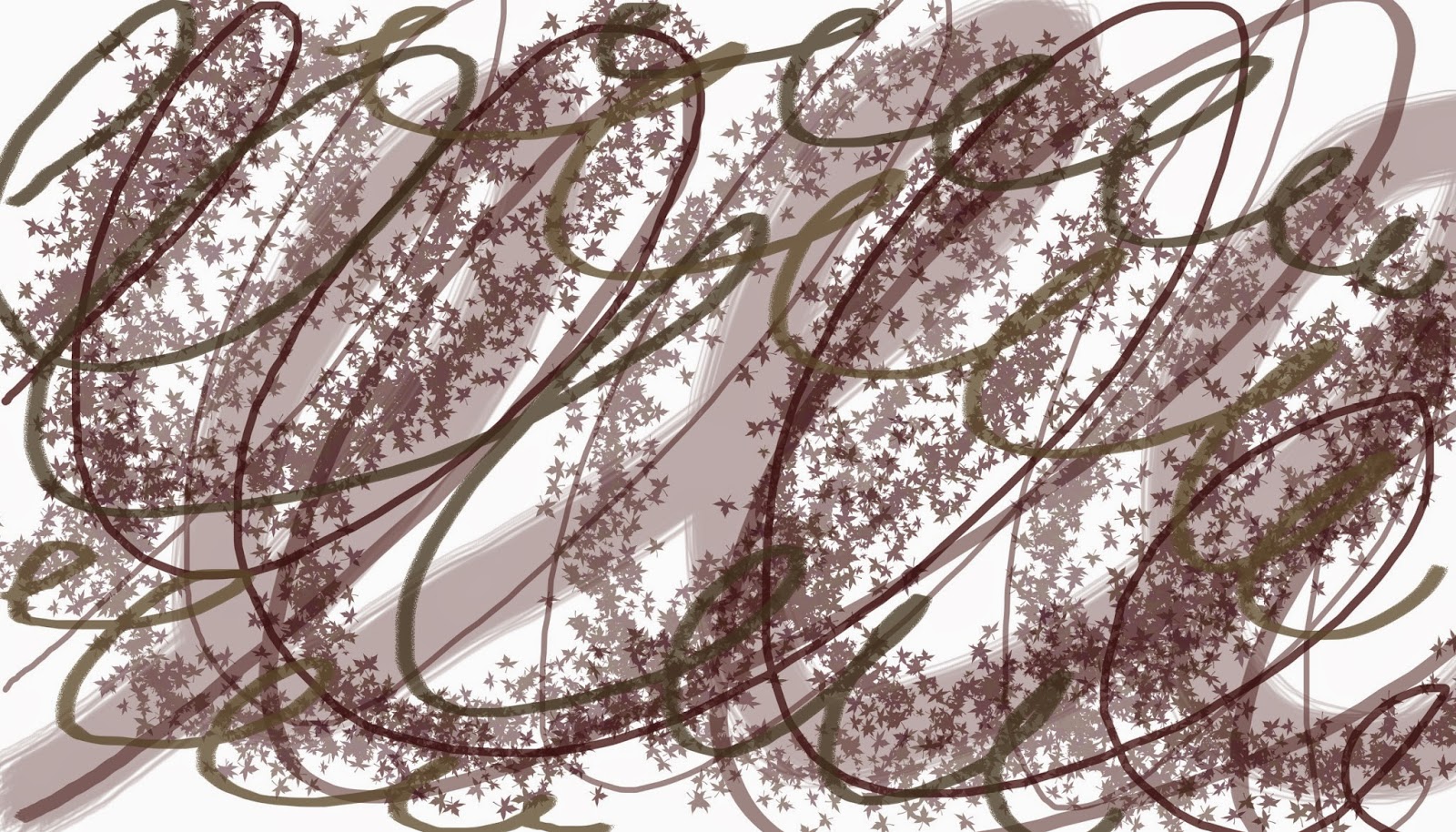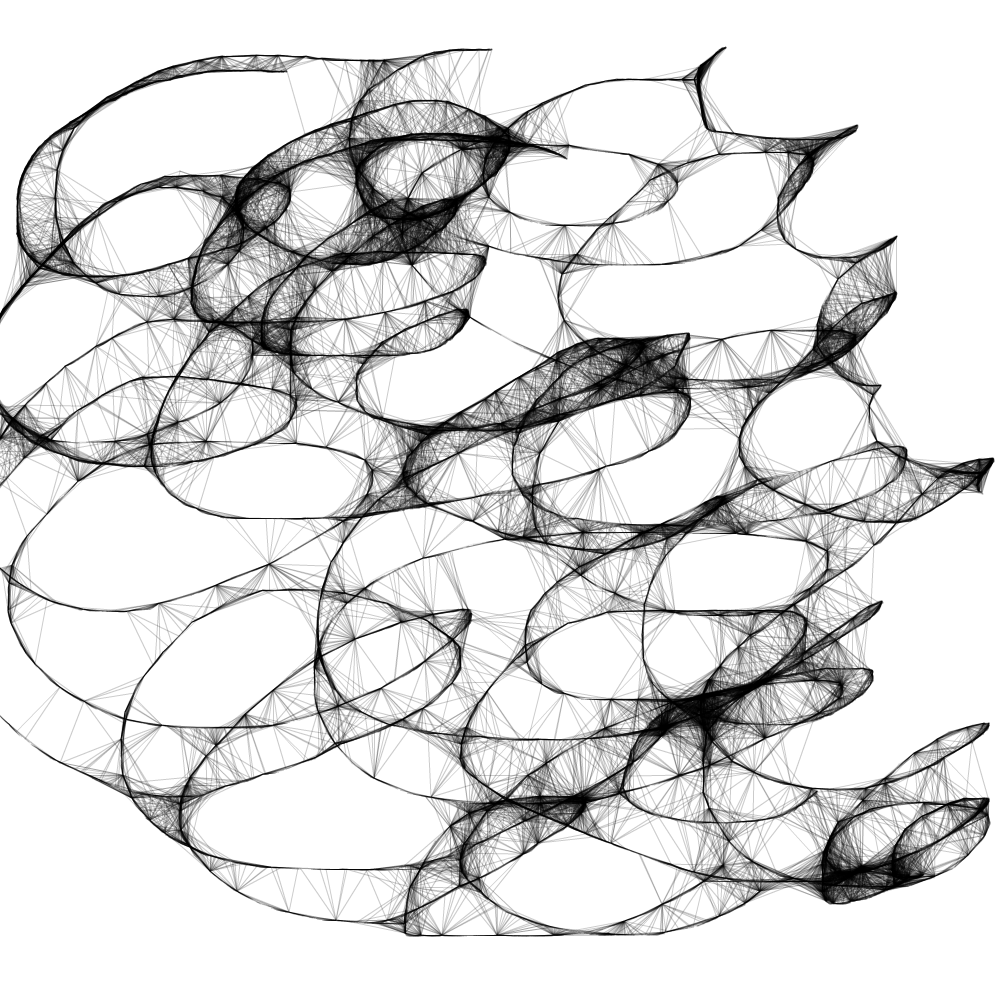Handmade
Many of activities I've undertaken so far in this module -- decorating paper, hand and machine stitching, even making cords -- have had about them an expressive facet that has been exciting, though if I'm being perfectly honest machine embroidery can still produce unintended results. I've approached the making of simple tassels with a degree of puzzlement fearing that their creation was more about technique than expression. I'm really not sure why I bother having this conversation either with myself or in this blog because, as usual, I've begun to see the potential of practising these techniques and seeing the result of countless small decisions.
The descriptions of materials are in anti-clockwise order from 7 o'clock.
 |
| 6:1 |
wrapped in brown velour, the tie of grey denim yarn. (the tie would be better brown)
2. Butterfly tuft in natural linen yarn and contrasting storm grey Kidsilk Haze. The tie of clingfilm
and silver grey machine embroidery.
3. A squab in grey velour, Kidsilk Haze and self-dyed silk. The tie is velour.
4. Long looped and twisted tassel in ice blue Panama yarn, pale grey crochet yarn and blue-grey silk
floss. The twists are silver gilt thread.
5. Long beaded tassel, the threads as in (4) and caught through a cut silk cocoon coloured with
metallic rub-ons. The knotted tie is of clingfilm and metallic thread embroidery.
6. Small, twisted three-knot tassel, again in the above yarns and tied with silver gilt thread.
7. Self-dyed two-tone cord threaded through a cut silk cocoon, with the same cord and bead and
knotted finish.
8. Grey tape, Petra cotton and sari waste applied in layers and wrapped around a 3 cm polystyrene
ball. The tassel is wrapped with a cord made of clingfilm and silver grey embroidery and left
looking shaggy. The head is stitched with silver grey detached chain stitch.
It was interesting getting the proportion of head to skirt right and its thickness given that the tassels are not a part of any overall design only samples. It was also important to limit the number of design features so that the individual tassel did not become too fussy, but just enough to make it balanced and suit the materials used. For example (8), the first one I made, looked unsatisfactory without the addition of the detached buttonhole stitch on the head.
Ensuring that the yarns/threads covered the polystyrene ball was tricky. I didn't resort to glue, but if the tassel were being handled regularly this may be the solution.
Little practical matters also came to light: the wonders of collapsible beading needles used on 5 and the need to wet and then wrap the cords used in (7) tightly with clingfilm after the tassel was complete. Finally, cutting any of the yarns and threads straight needs practice.
Machine made Tassels
Below from left to right are a Turk's Head Knot and three samples of machine made tassels.
1. Textured tight strip with thick space-dyed machine thread zig-zagged to make a cord.
2. Dark grey and rich brown velour wrapped round a frame and zig-zagged in grey thread. The made fabric is wrapped and threaded through with a knotted cord in the same colours.
3. Self-dyed sari ribbon, incorporating cling film and other threads, zi-zagged in Rainy Day space
dyed thread. Two lengths of the made fabric are rolled and stitched, then looped through each
other and trimmed with cling film cord stitched with metallic thread.
4. Self-dyed sari ribbon (this time only two strips) zig-zagged in metallic thread. Self-dyed cord is
looped through the ends and left uncut and unstraightened. The two tassels are trimmed with self-
dyed gimp and velour and stitched with metallic threads.
I have learned such a lot through making tassels. Initially I thought they were mainly associated with elaborate interior designs and required a high level of finish. Of course this is only part of the story.
The experiments in combining colour, texture, thickness, using a range of materials and techniques were endlessly fascinating. Even using just my colour palette it wasn't always possible to create the subtle effect I wanted, and to add sheen rather than shine to the finished result.
Size and proportion were important too and for this its useful to imagine the role and function served by the tassels. In this regard I was interested to find how stiff the made fabric became when as many as six wrappings of sari waste were wound round the frame as in the pale blue tassel, a problem I exacerbated by then rolling and stitching the fabric. I'd chosen to do this as the fabric was too wide and out of proportion to the length. By reducing the sari waste in the brown double tassel the band is soft and flexible and narrower. The tassel in the pale blue version is far too stumpy. So much to get right!
Machine made Tassels
Below from left to right are a Turk's Head Knot and three samples of machine made tassels.
1. Textured tight strip with thick space-dyed machine thread zig-zagged to make a cord.
2. Dark grey and rich brown velour wrapped round a frame and zig-zagged in grey thread. The made fabric is wrapped and threaded through with a knotted cord in the same colours.
3. Self-dyed sari ribbon, incorporating cling film and other threads, zi-zagged in Rainy Day space
dyed thread. Two lengths of the made fabric are rolled and stitched, then looped through each
other and trimmed with cling film cord stitched with metallic thread.
4. Self-dyed sari ribbon (this time only two strips) zig-zagged in metallic thread. Self-dyed cord is
looped through the ends and left uncut and unstraightened. The two tassels are trimmed with self-
dyed gimp and velour and stitched with metallic threads.
 |
| 6:2 |
I have learned such a lot through making tassels. Initially I thought they were mainly associated with elaborate interior designs and required a high level of finish. Of course this is only part of the story.
The experiments in combining colour, texture, thickness, using a range of materials and techniques were endlessly fascinating. Even using just my colour palette it wasn't always possible to create the subtle effect I wanted, and to add sheen rather than shine to the finished result.
Size and proportion were important too and for this its useful to imagine the role and function served by the tassels. In this regard I was interested to find how stiff the made fabric became when as many as six wrappings of sari waste were wound round the frame as in the pale blue tassel, a problem I exacerbated by then rolling and stitching the fabric. I'd chosen to do this as the fabric was too wide and out of proportion to the length. By reducing the sari waste in the brown double tassel the band is soft and flexible and narrower. The tassel in the pale blue version is far too stumpy. So much to get right!


























































